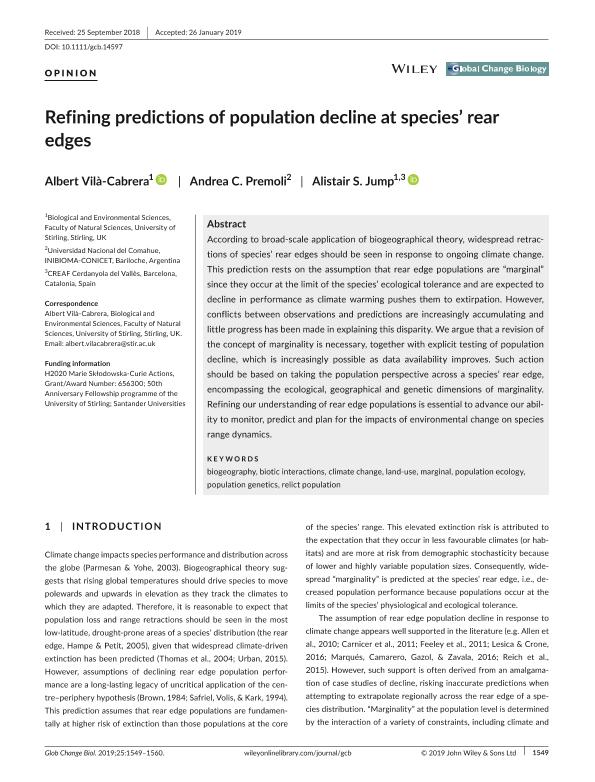Artículo
Refining predictions of population decline at species’ rear edges
Fecha de publicación:
02/2019
Editorial:
Wiley
Revista:
Global Change Biology
ISSN:
1354-1013
e-ISSN:
1365-2486
Idioma:
Inglés
Tipo de recurso:
Artículo publicado
Clasificación temática:
Resumen
According to broad‐scale application of biogeographical theory, widespread retractions of species' rear edges should be seen in response to ongoing climate change. This prediction rests on the assumption that rear edge populations are “marginal” since they occur at the limit of the species' ecological tolerance and are expected to decline in performance as climate warming pushes them to extirpation. However, conflicts between observations and predictions are increasingly accumulating and little progress has been made in explaining this disparity. We argue that a revision of the concept of marginality is necessary, together with explicit testing of population decline, which is increasingly possible as data availability improves. Such action should be based on taking the population perspective across a species' rear edge, encompassing the ecological, geographical and genetic dimensions of marginality. Refining our understanding of rear edge populations is essential to advance our ability to monitor, predict and plan for the impacts of environmental change on species range dynamics.
Palabras clave:
BIOGEOGRAPHY
,
BIOTIC INTERACTIONS
,
CLIMATE CHANGE
,
MARGINAL POPULATIONS
Archivos asociados
Licencia
Identificadores
Colecciones
Articulos(INIBIOMA)
Articulos de INST. DE INVEST.EN BIODIVERSIDAD Y MEDIOAMBIENTE
Articulos de INST. DE INVEST.EN BIODIVERSIDAD Y MEDIOAMBIENTE
Citación
Vilà Cabrera, Albert; Premoli Il'grande, Andrea Cecilia; Jump, Alistair; Refining predictions of population decline at species’ rear edges; Wiley; Global Change Biology; 25; 5; 2-2019; 1549-1560
Compartir
Altmétricas




